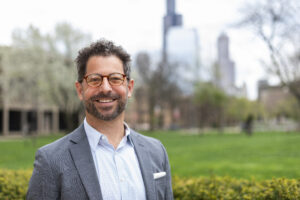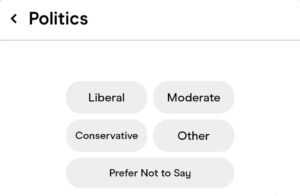These participants from the Lawrence-Kedzie TIF district are among the six multi-family rental unit owners and 30 homeowners that have been accepted into a program offering full or matching grants to fix roofs, windows, tuck pointing, porches and electric work. Mayra Werner, director of the TIF/NIP in Albany Park, led the meeting, walking residents through the forms and contracts needed for the construction process.
“It’s not a relaxing situation, but the end result is great,” said Werner. The program, administered by the Albany Park Community Center, accepts applications and awards grants to eligible owners on a first-come, first-serve basis. Owners who have received a TIF grant said the acceptance period takes a while but is worth the wait.
Three years after applying to the grant program, Jason Payne received $12,000 for new windows and electric work on his two-flat off of Lawrence and Kedzie avenues. “A couple of times I didn’t think it would go through,” said Payne, who discovered the TIF program when his neighbors received a grant for construction. After getting accepted in the program, it took three months to finish the construction on Payne’s house.
There are eligibility requirements to receive TIF money, including complying with city codes and not owing the city money. Single-family homeowners who receive a full grant have income requirements. A single-family owner is eligible to receive up to $10,000 per unit and $2,500 for each additional unit. A multi-family rental unit owner is eligible to receive a matching grant of up to $10,000 per unit and a maximum of $100,000 for the whole building.
Payne said he couldn’t have done the work all at once without the grant. “Overall it was a great experience,” he said. “Everyone’s happy. Everyone wins.” The Chicago Department of Housing allocates $1 million to the center, and after the center takes a 10 percent administration fee, $900,000 goes into the TIF fund. During four construction rounds, the Lawrence-Kedzie TIF district has spent about $3.3 million on 590 units.
Homeowner Steve Gibons received a $15,000 grant for tuckpointing and infrastructure work on his three-flat earlier this summer. He knew he was in a TIF district, having received a letter from Chicago’s Department of Housing sent out to owners in the district and surrounding area confirmed the grant program.
“It’s really great that I was able to do this,” said Gibons. “I would have had to take out a loan.” But even with the extra help the tax-increment financing program offers, Gibons called TIF a “double-edge sword,” referring to contention over how and where the money is spent. TIF districts fund development by freezing the amount of property taxes received by taxing bodies (such as schools, parks, police and the county) over a period of 23 years.
Some critics contend they deny much-needed money to schools and the county. The TIF-funded residential rehab program is called Neighborhood Improvement Program, and its program for small businesses and industry is called SBIF, Small Business Improvement Fund. Jackie Leavy, the former executive director of Neighborhood Capital Budget Group, said not every TIF district gets NIP and SBIF grants. If they do, it is in the form of $1 million here and there, she said — not enough to make a difference. Leavy said the purpose of creating a TIF district is to try to make property within a district worth more, which increases property taxes. But if people’s earning power and economic development revenue do not increase, then they cannot keep up with paying the increased property taxes.
“In other words, ironically, the very people who benefit from these short-term, one-time TIF grants might not be able to afford to stay in the TIF long-term,” she said. Leavy calls for more accountability and transparency in the city’s 150 and growing TIF districts. She said the districts should be limited to blighted areas, where there are real economic opportunities as opposed to “overloaded piggy banks” in “superheated redevelopment” areas.
TIFs are “supposed to be for the needy not for the greedy,” said Werner. The TIF in Albany Park targets buildings in the neediest areas, where there are the most gangs and constant graffiti, she said. “It’s a vicious cycle; if you don’t fix them up, it’ll start rubbing off to the neighborhood,” said Werner, emphasizing that gangs will continue to graffiti and tag until owners show they care by fixing buildings.
Categories:
Money Matters Northwest Side Public
Tags:
albany park housing rogers park tif






Be First to Comment